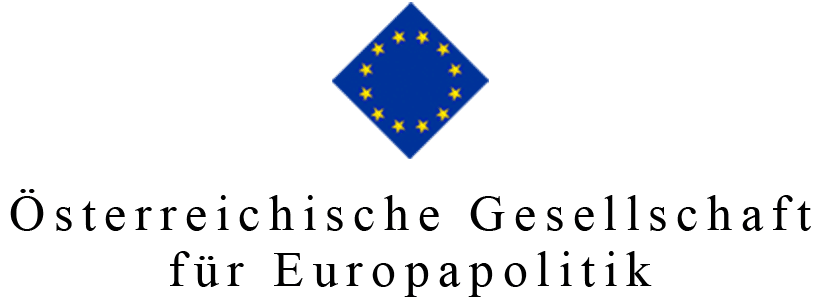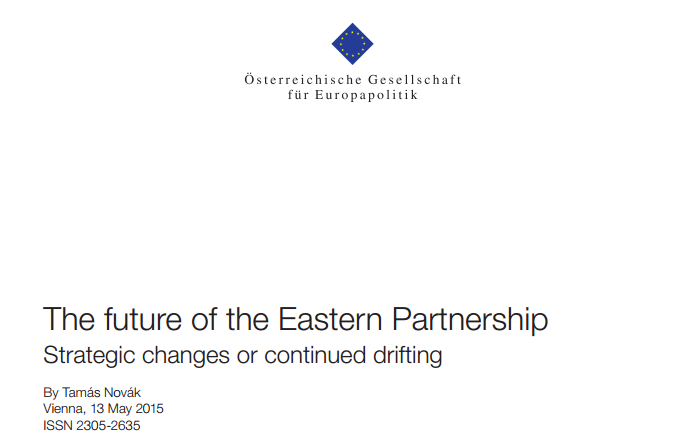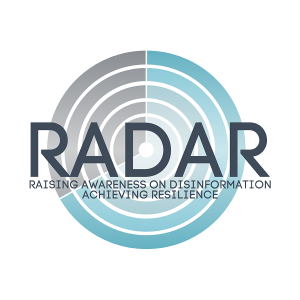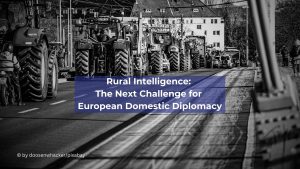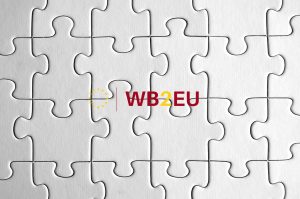Strategic changes or continued drifting
Policy Recommendations
- Make a clear decision about the objective of the Eastern Partnership and make it an integral part of a consistent EU foreign policy. If the EU aims at becoming a credible and serious actor in international affairs, it must become a power which is able to resolve complicated regional conflicts.
- Consider value based policy-making more important than simple “realpolitik” – even if it requires more effort.
- Create undivided member state support behind the policy and explain to every stakeholder – most importantly EU citizens and Eastern Partnership leaders and the people – the reasons behind choosing the accepted alternative over other available options.
Abstract
In 2009 the EU launched the Eastern Partnership as the Eastern Dimension of the European Neighbourhood Policy. Russia also initiated an ambitious integration project (after several integrational attempts from the mid-nineties) with the final objective of creating the Eurasian Economic Union. These two initiatives seemed to be increasingly competing with each other to attract post-communist countries of the East prior to the Vilnius Summit in 2013. Catherine Ashton, High Representative of the Union for Foreign Affairs and Security Policy at that time, said that the Vilnius summit would “open a new chapter” in the EU’s relations with its Eastern partners. She was right, but most probably she was anticipating a different kind of change. Independently of the causes behind the current difficulties in the Eastern Partnership region, the EU is facing a fundamental dilemma. If at this point it wants to make an impact and at the same time preserve its attractiveness for third countries, strategic decisions have to be taken.
*********************************
Introduction and background
The failure of signing an Association Agreement in 2013 with Ukraine – the strategically most important country of the Eastern Partnership (EaP)[1] – was a sign of inability by the EU to implement its objective in Eastern Europe in a rapidly changing international power system and to convince countries to favour the offered model. Several policy makers and analysts were caught off guard by the unfolding turn of events. As Federica Mogherini put it in a recent comment, the EU’s Neighbourhood Policy may have been “naive and confrontational”. But she also added that she would not be too critical with the previous Commission’s approach and that this issue should be rather raised after the completion of the four month consultation program on the future of the ENP.[2] Currently, however, the major directions of strategic changes regarding the future of the EaP are unpredictable. Due to this uncertainty it cannot be ruled out that the new strategic approach would be a disappointing one for the EaP countries.
One of the most important conclusions that may be drawn from the developments in the Eastern neighbourhood is probably that the EU has no choice but to abandon its approach that is based on the presumption that its model is sufficiently attractive for third countries and requires no additional efforts. This belief was building on the notion that neighbouring countries in Central and Eastern Europe (CEE) would transform their internal structures with relatively modest political and economic support and they would do anything in order to comply with the conditions set by the EU without considering any alternative options seriously. In the case of the first wave of EU enlargement with CEE countries (in 2004) this approach had succeeded and the EU faced little if no difficulty in convincing countries in the region to internalise and accept that notion. Frankly speaking there was no foreign policy alternative to the enlargement or no intention to challenge it. The EU’s strategy, however, proved to be largely unsuccessful in the Western Balkans – the case of Bosnia confirms this very clearly. The EU’s transformative power also seems to be limited in Serbia, Albania, and Montenegro not to mention the unresolved economic, political and foreign policy dilemmas and problems in Kosovo.[3] Although the soft power (or transformative leverage) of the EU had worked in Central Europe and achieved some results in the Western Balkans it still remains low-key in Eastern Europe.
Russia, a strong regional power with large soft and hard powers has been watching the possible geopolitical gains of the European Union with growing concern. From the Russian perspective it was the European Union that revived geopolitics in CEE by launching the Eastern Partnership – after successfully incorporating several Central European countries into the North Atlantic economic and security institutions. The perception of the “weak and declining” Russia, which definitely had dominated the thinking of EU policy makers (and US analysts too) prior to the 2013 Vilnius Summit, did not seriously reckon with the possibility of a change in Russia’s attitude towards the West. But the more precise interpretation is that the Russian stance has not changed in comparison to previous years, but as John Mearsheimer put it “great powers are always sensitive to potential threats near their home territory”.[4] This statement refers to the fact that the EU exceeded the tolerance level of Russia. Although the level of relations with the individual EaP countries is quite diverse, the primary concern is of course Ukraine.[5]
Options
The EU is the only external power that is expected to manage and influence the affairs in EaP countries including the crisis in Ukraine (with the supportive policy of the US of course) besides Russia. Given the fact that Russia does not pose a threat from a global perspective – unlike terrorism – and that the United States does not possess vital national security interests in the region that need to be protected, the Ukraine conflict is less important for the US, which probably still does not take Russia seriously.[6] Other important international actors are even less interested in the developments within the region. China, Japan considers it to be Russia’s business. These circumstances make the role of the EU in the EaP region unique. The future of the EaP and the ability of the EU to influence the developments therein becomes a very important test for the CFSP (Common Foreign and Security Policy). If the EU is unsuccessful in a region where it may have significant interest, what can realistically be expected from it on a global level?
Regarding the real content of the EaP, several difficult questions have to be answered. Does the European Union homogenously refuse the annexation of Crimea? If not, what are the clear, substantial reasons behind it? What is the policy objective regarding Russia?[7] What can be the final objective, the “strategic approach” of the Eastern Partnership from the EU’s perspective? Using international relations (IR) and political economic theories and analyses, three major options can be identified.
EU membership of the countries concerned
This alternative sets EU membership of the EaP countries as the final objective of the initiative. EU enlargement (and the redefinition of NATO strategy) would without doubt express the value based approach according to which it is much better to live under democratic rules and guarantying these values than under the rule of an autocratic and corrupt elite strongly connected to the Russian leadership. In pursuing this objective the EU should do everything in order to support the democratic transformation and economic restructuring in the countries which really want to become members of the EU. But this strategy requires a very important factor in addition to large financial spending and strong and undivided support of the member states: power. The soft power of the EU is not enough to accomplish this objective. What is more, even hard power will not be sufficient.[8] In theory there exists an instrument that may be effective if applied with full strength: the policy of tough sanctions against Russia with the unanimous and full support of the EU member states.[9] This strategy is confrontational with Russia and is contingent on internal coherence and high level of coordination among member states and a value and principle based policy.
Maintaining buffer zones between the EU and Russia
The second option would openly admit that the EU is unable and in fact does not want to be engaged more deeply in the affairs of the Eastern Partnership countries and in the Ukraine conflict and would rather seek to make an agreement with Russia. This approach de facto accepts the current situation and confirms the division of Ukraine and EaP countries between pro-western and pro-Russian countries/regions. This strategy would involve the acceptance of the outcomes of Russian activities in the EaP region because this is the “realpolitik” in the current power relations. It would also suggest that having relatively good relations with Russia is more important than relations with neighbouring EaP countries. From another perspective this approach means that trading with countries and their peoples in order to mitigate the conflict with Russia and to be freed from this cumbersome situation would be the easier path to go down on. Instead of a confrontational policy against Russia, which requires economic sacrifices and diplomatic pressure, this policy would result in economic and political advantages or – in the worst case – only minimal losses. Such an agreement would be beneficial for the EU and Russia since it would not cost much and less effort would be required from the EU. It is why from an IR theoretical perspective this approach seems to be the most likely scenario to unfold. This approach also considers the Eastern Partnership mostly from a business and geopolitical perspective and subdues democratic values.[10] With fading chances of EU membership, Ukraine would soon be facing very adverse economic[11] and political consequences which could easily overwrite the benefits of democratic transformation achieved so far and may lead again to a change of direction the government is pursuing.
Drifting without declaring the final objective
The third option is the continuation of the indefinite, vague and drifting policies towards the region underpinned by the large diversity of the countries in question (especially if we deal with the whole Neighbourhood, not just the Eastern Partnership). The paralysed “no change” strategy can be justified by the numerous challenges facing the EU – in addition to Russia – such as Grexit/Brexit, growth problems, difficulties with TTIP negotiations, and Euroscepticism, etc. In this case the EU would emphasize the responsibility of individual EaP countries and would offer some vaguely defined support for countries that decide in favour of the European perspective. This is a cheap and convenient way for the EU to avoid any major confrontation with Russia and to refrain from elaborate strategic objectives in the EaP region. The outcome of this option would be similar to the second one but in this case the EU would silently give up the entire EaP region due to its inability to create a common policy, which wins the support of every member state. If the EU opts for this alternative, it will only reinforce the perception of it being weak in the face of Russia.
Conclusion
The EU’s traditional model (financial incentives in exchange of good governance), its “soft power” has proved to be inefficient in the Eastern Partnership. The question as to how the EU can contain Russia while balancing the preservation of its role and goals in the region and keeping an open dialogue with Russia remains open. As a foreign policy actor, the EU is far from being a global power. In order to get international reputation in foreign policy, success in resolving regional issues has to come first. If the EU, however, is not unified in maintaining a strongly supported common foreign policy towards the region and it is unable to offer EU membership perspectives to a country like Ukraine, the risk of disappointment of the pro-western population and political elite will likely be on the rise. Concerning the three options described in this brief and witnessing the problems in the internal dynamics of the EU and the multiple conflicts between member states, the future does not look promising. The signs for “realpolitik” are strong, in which case the moral or ethical premises and ideological notions of a value and principle based EU can easily perish. Russia has several channels at its disposal through which it can influence developments within the EU – for example supporting countries or political parties that may challenge the current course of the EU; influence economic and political developments in the Western Balkans; use open or indirect economic instruments to influence etc. The policy motivated by these fears would mean that the EU’s role as an anchor in international political and economic affairs for smaller, weaker neighbouring or newly acceded countries is abandoned. This options should be avoided at any cost since it would create an environment where Western values and their future attractiveness can be questioned which will finally lead to the definitive elimination of the remnants of the EU’s soft power.
1) The Eastern Partnership (EaP) initiative aims to bring six Eastern European countries – Armenia, Azerbaijan, Belarus, Georgia, Republic of Moldova and Ukraine – closer to the EU. It offers a framework for deepening and strengthening relations between the EU and its partner countries.
2) Mogherini’s timid ‘mea culpa’ on EU neighbourhood policy. 04/03/2015. www.euractiv.com/sections/europes-east/mogherini-makes-timid-mea-culpa-eu-neighbourhood-policy-312631
3) Some of the most important challenges and risks are well described in Balkans in Europe Policy Advisory Group (BiEPAG) 2014. The Unfulfilled Promise: Completing the Balkan Enlargement. Policy Paper, May 2014.
4) The origins of the current crisis in Ukraine and the causes that had motivated Russian policy are explained in detail in Mearsheimer 2014.
5) It suffices to recall the famous statement of Henry Kissinger, according to which: “The West must understand that to Russia, Ukraine can never be just a foreign country” – The Washington Post, March 5, 2014.
6) See for example: Joseph S. Nye: The Challenge of Russia’s Decline. Project-syndicate, 14 April 2015, www.project-syndicate.org/commentary/russia-decline-challenge-by-joseph-s–nye-2015-04
7) “In light of Russia’s deliberate destabilisation efforts in neighbouring and EU countries, the union will need to present a strategy setting out clear objectives for policy towards every single EaP state, backed with credible implementation plans” Ozorina–Schwarzer 2015.
8) ‘Anything we did as countries in terms of military support for Ukraine is likely to be matched and then doubled, tripled and quadrupled by Russia. (Anthony Blinken, the US deputy secretary of state’ – See more at: www.chathamhouse.org/publication/do-not-arm-ukraine (April 2015).
9) Currently divisions are numerous within the EU regarding the policy towards Russia. And Russia is doing everything it can to deepen these divides in the EU as much as possible.
10) The enlargement of the EU and the NATO can be considered partly a geopolitically motivated policy.
11) According to most recent forecasts in Ukraine this year the GDP is to shrink by at least 5.5-7.5% . (IMF World Economic Outlook: -5,5%; Inflation Report of the National Bank of Ukraine published in March 2015: -7.5%) with significant downward risks after a 6.3-6.9% fall in 2014.
- Balfour, R. (2014). Not the European Neighbourhood Policy: Some iconoclastic tips to start rethinking the EU’s relations with its neighbours. EPC Commentary, 12 December 2014.
- Cadier, D (2013). Is the European Neighbourhood Policy a substitute for enlargement? In: The Crisis of EU enlargement, LSE IDEAS Report. pp. 52-58.
- Casier, T., Korosteeva, E. E., & Whitman, R. G. (2013). Building a Stronger Eastern Partnership: Towards an EaP 2.0, Global Europe Centre, University of Kent, September 2013.
- Delcour, L., & Kostanyan, H. (2014). Towards a Fragmented Neighbourhood: Policies of the EU and Russia and their consequences for the area that lies in between. No. 17 / 17 October 2014.
- Dolidze, T. (2015). EU Sanctions Policy towards Russia: The Sanctioner-Sanctionee’s Game of Thrones. CEPS Working Document, No. 402 / January 2015 ISBN 978-94-6138-442-3.
- Lehne, S. (2014). Time to Reset the European Neighborhood Policy, Carnegie Endowment for International Peace.
- Lippert, B. (2008). European Neighbourhood Policy: Many reservations – some progress –uncertain prospects, International Policy Analysis, Friedrich Ebert Stiftung.
- Mearsheimer, John J. 2014. The Liberal Delusions that Provoked Putin. Foreign Affairs, September/October.
- Youngs, R., & Pishchikova, K. (2013). Smart Geostrategy for the Eastern Partnership. Carnegie Endowment for International Peace.
- Žaneta, O., & Schwarzer, D. (2015). European Eastern Partnership: Recommendations for a Refined Approach ‘The Riga Process’, an initiative of the German Marshall Fund of the United States (GMF) and the Latvian Transatlantic Organisation (LATO).
ISSN 2305-2635
The views expressed in this publication are those of the authors and not necessarily those of the Austrian Society of European Politics or the organisation for which the authors work.
Citation
Novák, T. (2015). The future of the Eastern Partnership: Strategic changes or continued drifting. Vienna. ÖGfE Policy Brief, 17’2015
